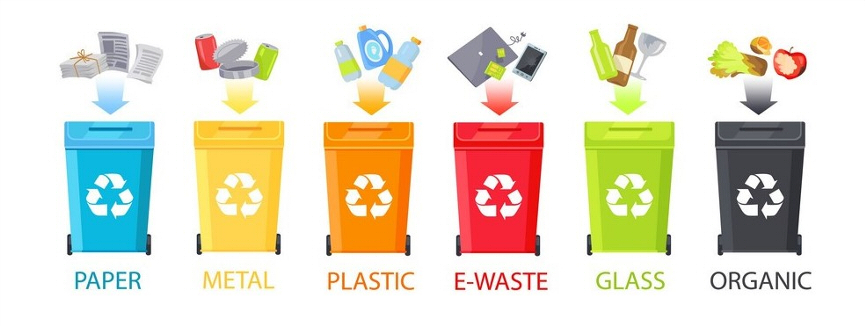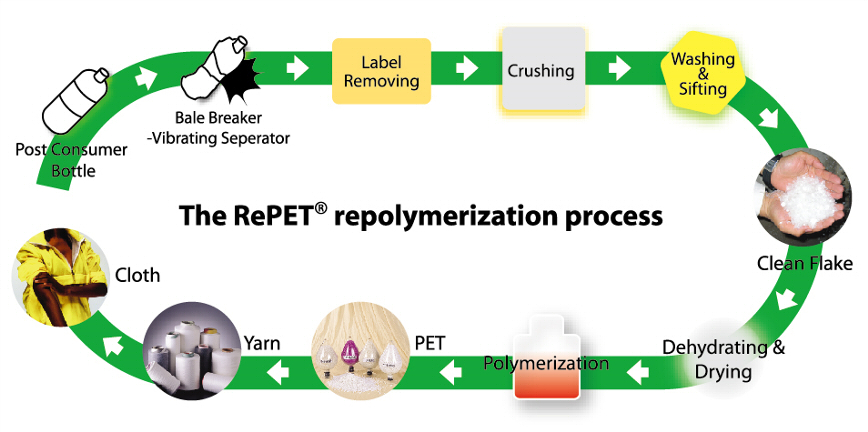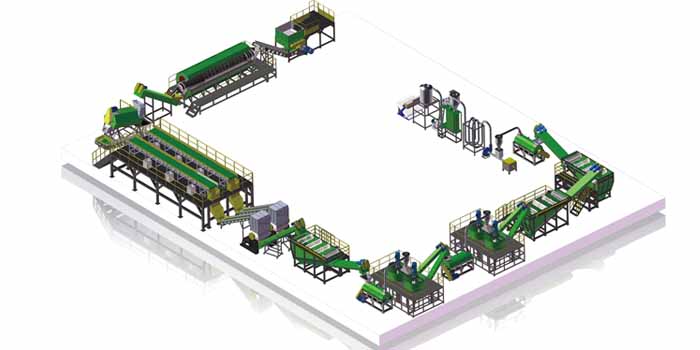Process
There’s more to recycling plastics than putting them in the correct bin.

The average consumer doesn’t think too hard about recycling. They’ll follow local guidelines for their plastics and consider it a job well done. Naturally, there’s much more to recycling plastics than meets the eye. Plastic recycling has always been a hot topic around the world. The most regularly recycled plastics are PET (polyethylene terephthalate), HDPE (high-density polyethylene), PP (polypropylene), and PVC (polyvinyl chloride). Some facilities are only able to recycle certain plastics and others can do them all. We’ll talk about the steps involved in getting plastics ready for recycling and the three types of recycling processes. Let’s take a closer look at the plastic recycling process.

Step 1: Collecting
Naturally, plastic needs to find its way to a recycling centre before the recycling process can begin. This is the step most people are familiar with. Sorting waste into the appropriate container makes up Step 1 of the recycling process and in involves morning run by the local authourities trucks to collect your bins. While it might seem easy, only 9% of plastic even makes it this far. Public education and city infrastructure haven’t yet solved the problem of ensuring the majority of plastic waste goes to recycling.
Step 2: Sorting
Before recycling can get underway, the plastic waste needs to be sorted according to its type. Plastic comes in a range of different varieties, such as PVC and PET. Each type of plastic has different properties and some are poor candidates for recycling. Sorting uses a range of different tools to isolate plastic by type to ensure a useable end result. Recycled plastics are first sorted by plastic type once they reach the recycling facility. This sorting is done either manually or by machines with the capability of sorting one plastic from another. These machines use anything from infrared to x-rays to recognize a polymer’s unique signature and sort plastic accordingly. If plastics are mixed in this stage of the process, the entire batch could be contaminated so it’s a very important step.
Step 3: Decontamination
A lot of plastic waste comes in the form of consumer goods. That means they may contain traces of food and drink, along with adhesive labels.Decontamination is exactly what it sounds like: washing the plastic to get rid of impurities. The end result of the recycling process should be as close to 100% plastic as possible to allow its reuse. Once the plastic has been decontaminated, it’s ready for the intense stages of recycling.
Step 4: Shredding Resizing and Identifying
The clean plastic is now shredded into smaller pieces, which allows further sorting. In this sorting phase, the plastic is filtered down further by a number of different categories. Machines test for density, thickness, and colour to establish the grade of the plastic and ensure that similar materials end up together. This creates a more useable end result. The next step is resizing the plastic into smaller pieces. This makes handling and processing easier in the long run and is performed by shredders and granulators which use industrial blades to cut and chop the plastics down into these manageable sizes. From there, the new plastic mulch is pushed through a screen and moved onto the next step. There are some facilities who stop at this step and sell the plastic mulch back to the industry.
Step 5: Wet Separation
At this stage, the recycled plastic is washed to remove everything from paper and glue to sand and grit. Water baths can be used to separate the plastics out by weight and water sprayers spray hot water over the plastics continuously. Chemicals and detergents can be added to get the plastics as clean as they can be before entering the next step.
Step 6: Dry Separation
There are a few ways plastics are dry separated. These include sorting them by thickness, applying heat to sort them by melting point, or exposing them to ultraviolet or fluorescent light separates them by color.
Step 7: Compounding
This is the final step for most recycled plastics which involves converting all the plastic mulch into high-quality, reusable pellets. This conversion is done by machines and the final result is a pellet that can be easily distributed and reused by the industry. There are also three types of recycling: Primary, Secondary, and Tertiary recycling and these are described below: Primary Recycling – Involves using recycled plastic to make a product similar to that of the original plastic. Secondary Recycling – A process where the product being made from the recycled plastic has different properties than the recycled plastic. Only segregated plastics can be processed with secondary recycling
Step 8: A New Beginning
Finally,
the plastic is ready to recycle. Machines melt and crush
the plastic into plastic pellets, turning it back into a
raw material that manufacturers can use to create new
products. The end result looks like a kind of
large-grained sand. If everything has gone well, there
won’t be any signs left of the plastic’s previous life.
Our Machines
